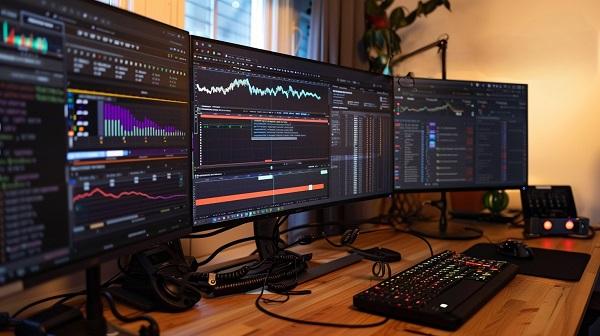How to Build a Reliable eBay Web Scraper(Python)
Step-by-step guide to build a eBay web scraper using Python, proxies, requests & Playwright examples, proxy setup, scale tips, monitoring, and legal cautions.
Dec 3, 2025
Master YouTube data scraping with GoProxy’s proxies. Learn methods, steps, and solutions to bypass bans efficiently.
YouTube, a global hub hosting over 500 hours of fresh video content every minute, stands as an unparalleled treasure trove of public data. Whether the goal is to analyze trending topics, gauge audience sentiment, or benchmark channel performance, scraping YouTube data unlocks a world of insights for businesses, researchers, and creators.
However, the platform’s dynamic structure, JavaScript-heavy rendering, and anti-scraping defenses like IP bans and CAPTCHAs pose significant hurdles. This guide offers a clear, actionable roadmap to scrape YouTube data effectively, spotlighting GoProxy’s dynamic residential proxies as the key to overcoming these challenges with ease and scalability.

Scraping YouTube isn’t a straightforward task. The platform’s content loads dynamically via JavaScript, meaning traditional scraping tools often fall short without browser simulation. Additionally, YouTube employs rate limits, CAPTCHAs, and IP bans to thwart automated access. For large-scale operations, these measures can halt progress unless paired with a robust proxy solution. Enter GoProxy: its dynamic residential proxies provide a vast pool of real, rotating IPs, ensuring uninterrupted access while dodging detection.
Three practical approaches cater to different skill levels and needs:
For those comfortable with coding, Python libraries like yt-dlp and Selenium offer powerful tools. yt-dlp excels at downloading videos and extracting metadata (e.g., titles, views, likes), while Selenium simulates a browser to handle dynamic content like comments. Pairing these with GoProxy’s proxies ensures requests blend into organic traffic, avoiding bans.
Web scraping APIs streamline the process by managing proxy rotation and CAPTCHA solving behind the scenes. While effective, they can rack up costs for high-volume scraping. Integrating GoProxy’s cost-effective residential proxies with a lightweight API setup offers a hybrid solution, balancing ease and affordability.
For bulk scraping—think millions of videos—proxies are the backbone. GoProxy’s dynamic residential proxies, with geo-targeting and high anonymity, distribute requests across diverse IPs, keeping operations smooth and scalable. This method shines when paired with custom scripts or existing tools.

Here’s a practical walkthrough to scrape YouTube video metadata and comments using Python and GoProxy:
Install Python (3.8+) and required libraries:
bash
pip install yt-dlp selenium requests
Sign up for GoProxy at Custom Web Data Scraping Solutions - Free Demo Available to access dynamic residential proxies.
GoProxy provides an API for seamless proxy integration. Configure it in a script:
python
proxy = "http://username:[email protected]:port"
opts = {"proxy": proxy}
This rotates IPs from GoProxy’s pool, ensuring anonymity and access to geo-restricted content.
Extract details like title, views, and likes with yt-dlp:
python
from yt_dlp import YoutubeDL
video_url = "https://www.youtube.com/watch?v=example"
with YoutubeDL(opts) as yt:
info = yt.extract_info(video_url, download=False)
metadata = {
"title": info.get("title"),
"views": info.get("view_count"),
"likes": info.get("like_count")
}
print(metadata)
GoProxy keeps the requests flowing without triggering bans.
Use Selenium for comments, which load dynamically:
python
from selenium import webdriver
from selenium.webdriver.chrome.options import Options
from selenium.webdriver.common.by import By
options = Options()
options.add_argument(f"--proxy-server={proxy}")
driver = webdriver.Chrome(options=options)
driver.get(video_url)
comments = driver.find_elements(By.CSS_SELECTOR, "div#contents div#content span[role='text']")
for comment in comments[:10]: # Limit to first 10
print(comment.text)
driver.quit()
GoProxy’s proxies ensure Selenium bypasses CAPTCHAs and IP blocks.
YouTube’s JavaScript rendering demands tools like Selenium. To optimize, set a timeout with WebDriverWait:
python
from selenium.webdriver.support.ui import WebDriverWait
from selenium.webdriver.support import expected_conditions as EC
from selenium.webdriver.common.by import By
WebDriverWait(driver, 15).until(EC.presence_of_element_located((By.ID, "comments")))
This waits for comments to load, avoiding errors from premature scraping.
For scraping thousands of videos, parallelize requests using Python’s multiprocessing module. Assign each process a unique GoProxy IP:
python
from multiprocessing import Pool
def scrape_video(url):
with YoutubeDL({"proxy": proxy}) as yt:
info = yt.extract_info(url, download=False)
return info.get("title")
urls = ["url1", "url2", "url3"]
with Pool(3) as p:
titles = p.map(scrape_video, urls)
print(titles)
GoProxy’s vast IP pool supports this scale without rate limits.
Compared to API subscriptions ($10,000+ monthly for 10M requests), GoProxy’s residential proxies (e.g., $3/GB) slash costs. A 400KB page at 10M requests totals 4,000GB, or $12,000—still cheaper with custom parsing overhead.
Scraping public YouTube data is generally permissible, but respect the platform’s Terms of Service. Avoid personal data collection (e.g., emails) and consult legal experts. GoProxy’s ethical proxy sourcing aligns with responsible scraping practices.
Scraping YouTube data opens doors to rich insights, from sentiment analysis to competitive benchmarking. With GoProxy’s dynamic residential proxies, the process becomes seamless, scalable, and cost-effective. Explore GoProxy’s custom web data scraping solutions and elevate data extraction to new heights.

GoProxy’s dynamic residential proxies rotate real residential IPs, mimicking organic user behavior. This reduces detection risks, unlike static IPs prone to bans in bulk scraping.
Yes, GoProxy’s geo-targeting lets users select IPs from specific regions, ideal for accessing localized videos or ads—perfect for market-specific campaigns akin to ad targeting solutions.
Use yt-dlp with GoProxy’s proxies to target Shorts URLs (e.g., /shorts/video_id). Parallelize requests for efficiency, leveraging GoProxy’s high concurrency support.
At $3/GB, GoProxy’s pricing beats API costs for high volumes. Its ad-targeting-inspired rotation logic optimizes bandwidth, keeping expenses low for millions of requests.
GoProxy pairs with tools like Selenium or custom XPath parsing. Regular script updates (5-20 hours/month) maintain compatibility, while GoProxy handles access continuity.
< Previous
Next >
 Cancel anytime
Cancel anytime No credit card required
No credit card required